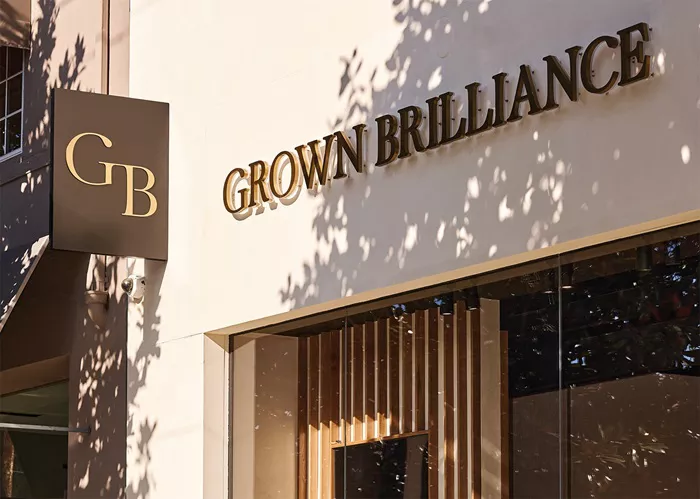Lab-grown diamonds, once seen as cheap and visibly inferior, have improved so much that they now closely resemble natural stones. Their affordability and environmental appeal are drawing more buyers, shaking up a luxury market that has long prized tradition and rarity.
According to The Knot’s annual survey, over half of U.S. newlyweds in 2023 chose engagement rings featuring lab-grown diamonds. That’s a steep rise from just 12% in 2019.
This surge has taken a toll on the natural diamond industry. Jewelry analytics firm Tenoris reports that prices for mined diamonds have fallen about 26% since 2022. De Beers, the top name in natural diamonds, saw a 23% drop in revenue in 2024 due to declining demand.
Even in Beverly Hills—a global luxury hotspot—retailers are adapting. Many now sell both lab-grown and natural stones. But despite industry shifts, local high-end jewelers remain confident in the enduring appeal of natural diamonds.
“Just look at the major jewelry houses opening new salons here,” said Martin Katz, a longtime Beverly Hills jewelry designer. “That shows strong global confidence in Beverly Hills as a market for genuine diamond jewelry.”
He and others believe a loyal customer base still values the uniqueness and heritage of natural stones.
“Lab-grown diamonds may look similar, but they are not the same,” Katz said. “Natural diamonds form over billions of years under intense pressure. That makes them rare treasures of the Earth with long-term value.”
Fellow jeweler Jack Weir agrees: “Natural diamonds have charisma; lab-grown diamonds do not.”
Lab-grown diamonds are chemically and physically identical to mined stones, but they’re created in labs in just weeks, not millennia.
Akshie Jhaveri, founder of Grown Brilliance, remembers being stunned when she couldn’t tell lab-grown from mined diamonds. That moment in 2020 led her to start her own lab-grown jewelry brand.
“I thought, this is amazing,” she said. “We need to act before this becomes mainstream.”
At the time, there were only two other major players. Today, lab-grown brands are everywhere. One of Grown Brilliance’s first locations opened just outside Beverly Hills on Melrose Place. The store now sells engagement rings and high-end statement jewelry suited for red-carpet events.
“All our high jewelry is handcrafted the same way as natural diamond pieces—hand-set, hand-polished, and made with solid gold,” said Jhaveri. “No one can tell the difference. So why spend so much on something you only wear a few times a year?”
Beyond business potential, Jhaveri was also drawn to the ethical and environmental benefits of lab-grown stones. Traditional diamond mining can damage ecosystems and release large amounts of carbon. Lab-grown production, by contrast, has a much smaller footprint and avoids links to conflict or “blood” diamonds.
Grown Brilliance has grown faster than Jhaveri expected. The company now has 14 stores across eight states, with more coming.
Lower production costs have helped expand the lab-grown market. In 2018, these diamonds cost about 20% less than natural ones. Today, that discount is 80–90%. Some experts believe prices will continue to fall.
One is William Logian, co-founder of RobinHood Diamonds. His company sells lab-grown diamonds at some of the lowest prices on the market. A 0.5-carat pear-shaped stone starts at just $119.
After working at top companies like Tiffany & Co., Logian founded RobinHood Diamonds as a personal mission after surviving Stage 4 cancer.
“I felt a moral pull to do something meaningful,” he said. “RobinHood Diamonds is about making luxury accessible and challenging the industry to stop overpricing lab-grown stones.”
He believes synthetic diamonds will keep getting cheaper and will soon dominate the market. But with that accessibility comes a question: will diamonds still symbolize luxury when everyone can afford them?
Sasha Tarasova, head of sales at Jack Weir & Sons, has noticed changing tastes. “We’ve seen more demand for colored gemstone rings, antique pieces, and designer jewelry,” she said.
Jack Weir started the business in 1981 after a trip to Brazil inspired him. His son Wyler joined in 2011, and they renamed it Jack Weir & Sons in 2012.
The Weirs specialize in rare vintage diamonds and travel the world to find unique pieces. Because of their focus on antique, one-of-a-kind stones, their business remains stable despite the rise in lab-grown diamonds.
“Our customers value the history and uniqueness of natural stones,” said Tarasova. “These are heirlooms—symbols of legacy and timeless investments.”
One standout item: a 1930s Art Deco Tiffany & Co. ring with a 5.03-carat emerald-cut diamond, listed for $188,000.
Katz, who recently moved to a penthouse studio in Beverly Hills’ Fred Hayman building, also sees his business as insulated from lab-grown trends. His clients want jewelry with history and lasting value.
“Each natural diamond is unique,” he said. “It’s like comparing original art to a reproduction—even if they look the same, the original is more valuable.”
Still, Katz believes lab-grown diamonds will continue to disrupt the industry.
“Retailers will open just to serve this market,” he said. “Margins are huge, but unlimited supply keeps pushing prices down. Soon, fashion brands might use lab-grown stones instead of crystals.”
Tarasova expects more jewelers to join the lab-grown market, while natural stones will remain the domain of high-end designers. In engagement rings, she predicts growing interest in colored stones and antique pieces.
“People want rings that reflect their personality,” she said. “Many don’t want something seen as cheap or mass-produced.”
Despite the changes, both Tarasova and Katz say Beverly Hills will remain a destination for luxury diamonds.
“Beverly Hills stands for heritage, craftsmanship, and style,” said Tarasova. “That’s why global shoppers come here to find the highest quality natural stones.”
Related topics:
- GAA Launches First Comprehensive Online Opal Course
- Industry Leaders Recognised at 2025 Diamonds Do Good Awards
- Diamond Jewellery Tops Sales at £225,000 Shropshire Auction


